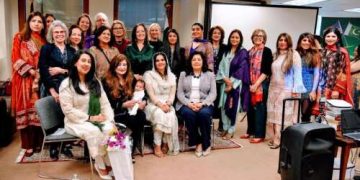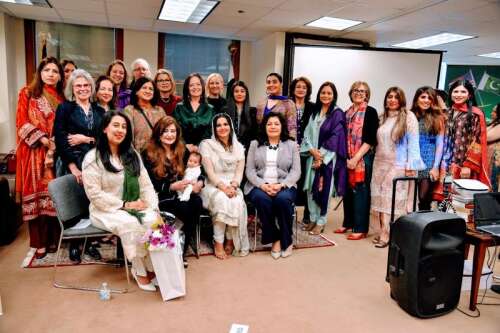In a world increasingly connected by technology and creativity, fashion has emerged as one of the most powerful tools of cultural expression. Yet, for many cultural designers—those who create clothing inspired by their heritage and traditional roots—breaking into the global fashion industry has long been a challenge. From limited visibility to lack of resources, their talents often remain undiscovered by mainstream audiences.
That’s now beginning to change, thanks to a new wave of fashion platforms dedicated to cultural designers. These digital and physical spaces are empowering artisans, small fashion houses, and independent designers to share their stories through clothing, connect with global buyers, and reshape the future of fashion with a focus on authenticity, sustainability, and cultural pride.
What Are Cultural Designers?
Cultural designers are fashion creators who draw inspiration from their native traditions, ethnic backgrounds, or historical dress codes. Their work often blends contemporary trends with techniques passed down through generations—whether it’s the vibrant embroidery of Mexico, the indigo-dyed fabrics of West Africa, the intricate weaves of South Asia, or the bold patterns of Indigenous American fashion.
Rather than following fast fashion cycles, cultural designers often work slowly and intentionally, focusing on craftsmanship, storytelling, and cultural preservation. Their pieces are not just garments—they’re embodiments of identity and legacy.
The Role of Fashion Platforms
A fashion platform for cultural designers is more than just an online store. It is a community, marketplace, and movement that connect creators with consumers who value meaning over mass production. These platforms typically offer:
- E-commerce solutions for selling garments internationally
- Marketing support to reach global audiences
- Storytelling tools like video, photography, and interviews to showcase the culture behind the design
- Educational resources on ethical production, branding, and business
- Collaboration opportunities with other artists and brands
By bridging the gap between local craftsmanship and international demand, these platforms democratize fashion and give voice to underrepresented cultures.
Notable Platforms Making a Difference
Several platforms have risen to prominence in recent years by championing cultural fashion:
- Fashion Revolution – While not a marketplace, it’s a global movement that supports transparency, ethics, and cultural storytelling in fashion.
- UNWRP – Known for featuring diverse and culturally inspired designs in both fashion and lifestyle products.
- Studio 189 – A fashion lifestyle brand co-founded by Rosario Dawson, supporting African artisans through ethical production and high-fashion exposure.
- Soko – A tech-powered platform that connects Kenyan jewelry artisans with global markets—while not strictly fashion, it represents a similar mission for accessories.
Newer startups are also emerging to spotlight Indigenous designers, Afro-diasporic fashion, and Asian traditional wear by using AI-driven personalization, virtual try-ons, and mobile-first marketplaces.
Why Cultural Fashion Matters Today
Fashion has often borrowed, and sometimes appropriated, cultural elements for aesthetic purposes without crediting their origins. Cultural designers are flipping that narrative by reclaiming their heritage and sharing it on their own terms.
As younger generations around the world become more interested in identity, diversity, and sustainable consumption, cultural fashion is gaining traction. People want to wear clothes that say something about who they are or what they believe in. Whether it’s wearing a Ghanaian Kente print dress at a wedding or incorporating Japanese kimono styles into streetwear, cultural fashion is now about celebration, not assimilation.
Additionally, these platforms promote slow fashion, which is more environmentally sustainable. Handmade, ethically sourced, and produced in small batches, cultural fashion counters the wasteful practices of mass production.
Challenges That Remain
While the rise of fashion platforms is promising, cultural designers still face several barriers:
- Logistics and shipping from remote regions to international customers
- High production costs for handmade or low-scale items
- Limited digital literacy or internet access in some areas
- Language and communication barriers
- Risk of cultural appropriation or exploitation without proper legal protection
To address these issues, some platforms partner with NGOs, local governments, and business development programs to train designers in e-commerce, protects intellectual property, and build export-ready infrastructure.
The Future of Cultural Fashion Platforms
The future looks bright for fashion platforms that center cultural designers. With advancements in technology, especially AI and AR, these platforms can offer virtual fashion shows, 3D design visualization, and personalized shopping experiences.
More importantly, there is a growing global appetite for authenticity and diversity in fashion. Consumers are no longer satisfied with cookie-cutter trends; they want pieces with purpose and origin. As the market evolves, cultural designers are poised to lead the charge in making fashion more inclusive, conscious, and culturally rich.
Conclusion
A new era of fashion is unfolding—one where cultural designers are no longer sidelined but celebrated. Fashion platforms tailored to their unique needs are not just selling clothes; they’re preserving stories, reviving traditions, and building a more equitable industry. As more people seek fashion with meaning, these platforms will continue to thrive and inspire a new generation of creators and consumers alike.












































